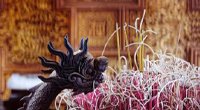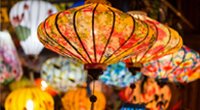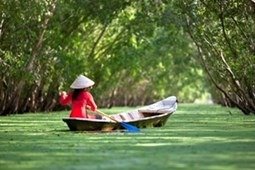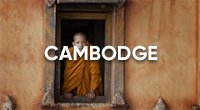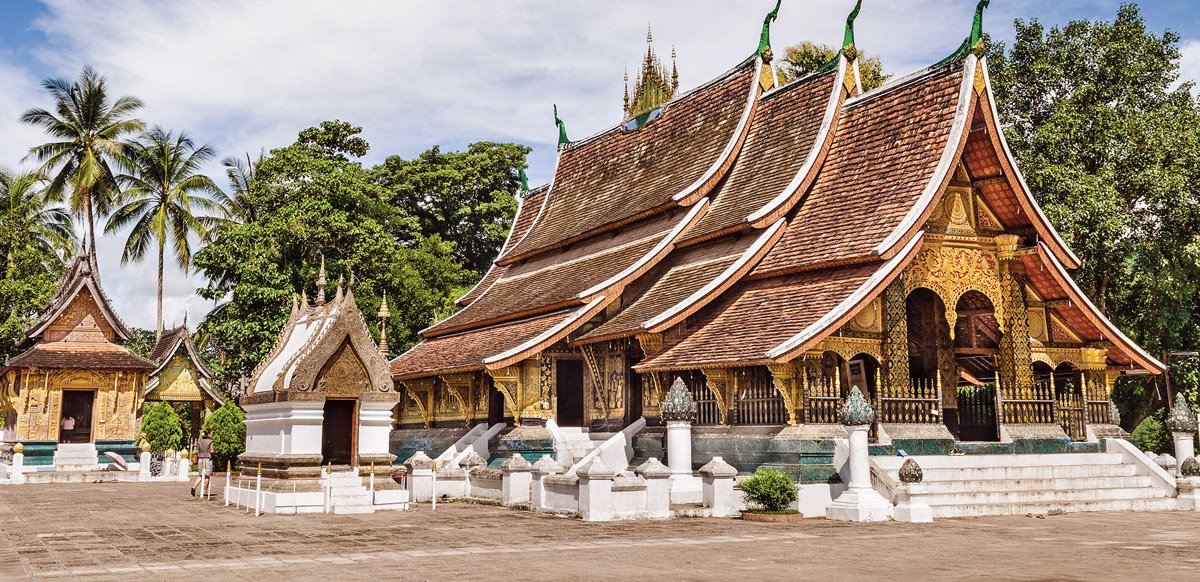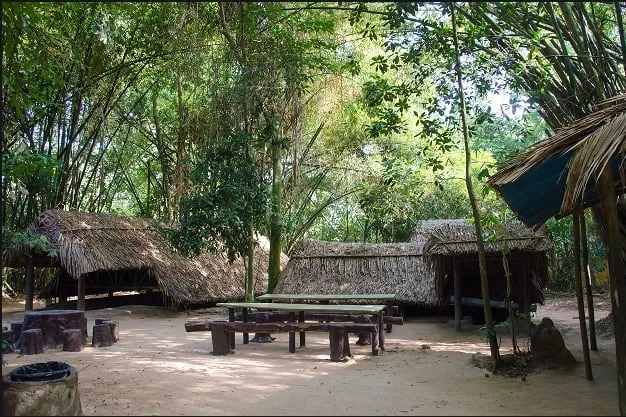Contents
ToggleWhere Is Vat Xieng Thong Located?
Vat Xieng Thong is located at the northern tip of the Luang Prabang peninsula, right where the Mekong and Nam Khan rivers meet. It’s about 1 km from the city center, making it easily accessible by foot, tuk-tuk, or bicycle.
🚶 On Foot
Enjoy a 15–20 minute walk from Sisavangvong Road, passing scenic colonial architecture and riverfront views along the way.
🛺 By Tuk-Tuk
Tuk-tuks are widely available throughout Luang Prabang. Expect a 5–10 minute ride from most hotels or the main night market area.
🚴 By Bicycle
Rent a bike in town and take a leisurely 10-minute ride to the temple. It’s a great way to explore the peninsula at your own pace.
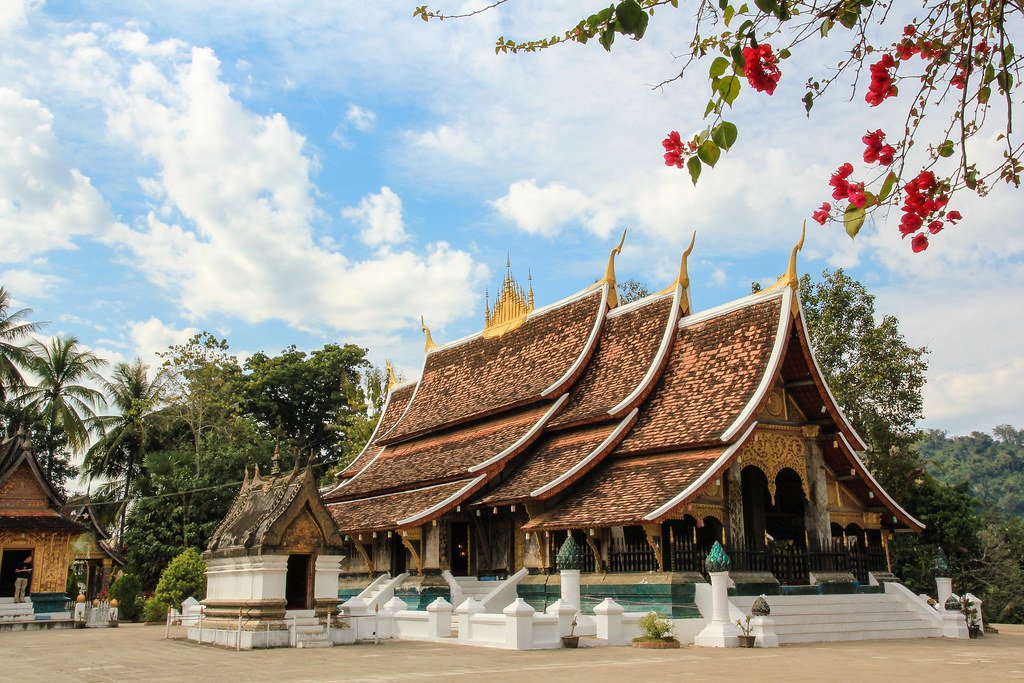
Best Time to Visit Vat Xieng Thong
Opening hours: Daily from 8:00 AM to 6:00 PM
For the most atmospheric visit, aim to go in the late afternoon, when the sunlight beautifully illuminates the golden façades and colorful glass mosaics, creating a magical glow across the temple grounds.
☀️ Additional Tip:
- Morning visits tend to be quieter and cooler—ideal if you prefer a more peaceful experience and softer lighting for photography.
- Avoid visiting at midday, when it can be hot and crowded, especially during the peak tourist season (December–February).
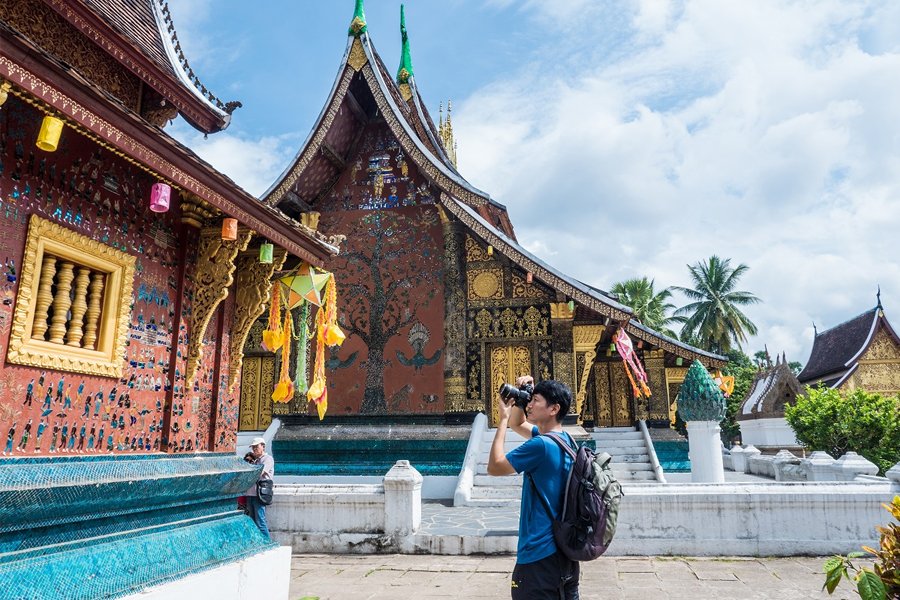
Architectural Highlights of Vat Xieng Thong
🏯 Majestic Rooflines & Historic Layout
Spanning over 8,200 square meters, Vat Xieng Thong is one of the most important and visually stunning temples in Laos. The complex includes more than 20 historic buildings, all built in the traditional Luang Prabang architectural style. The multi-tiered roofs, which slope low toward the ground, are iconic features symbolizing protection and spiritual harmony.
🌳 The Tree of Life Mosaic
Located on the rear wall of the main sim (ordination hall), the Tree of Life is a vibrant mosaic made from colored glass. It may represent:
- The Bodhi tree, under which the Buddha attained enlightenment
- A mythical tree from Lao legend, symbolizing wisdom and interconnectedness
This is one of the temple’s most photographed and spiritually significant features.
🛠 Traditional Lao Craftsmanship
Vat Xieng Thong is a showcase of centuries-old artisanal techniques:
- Gold leaf stencils adorn doors and walls
- Intricate wood carvings highlight religious stories and symbols
- Glass mosaics, some added during the 20th century, sparkle in the sunlight
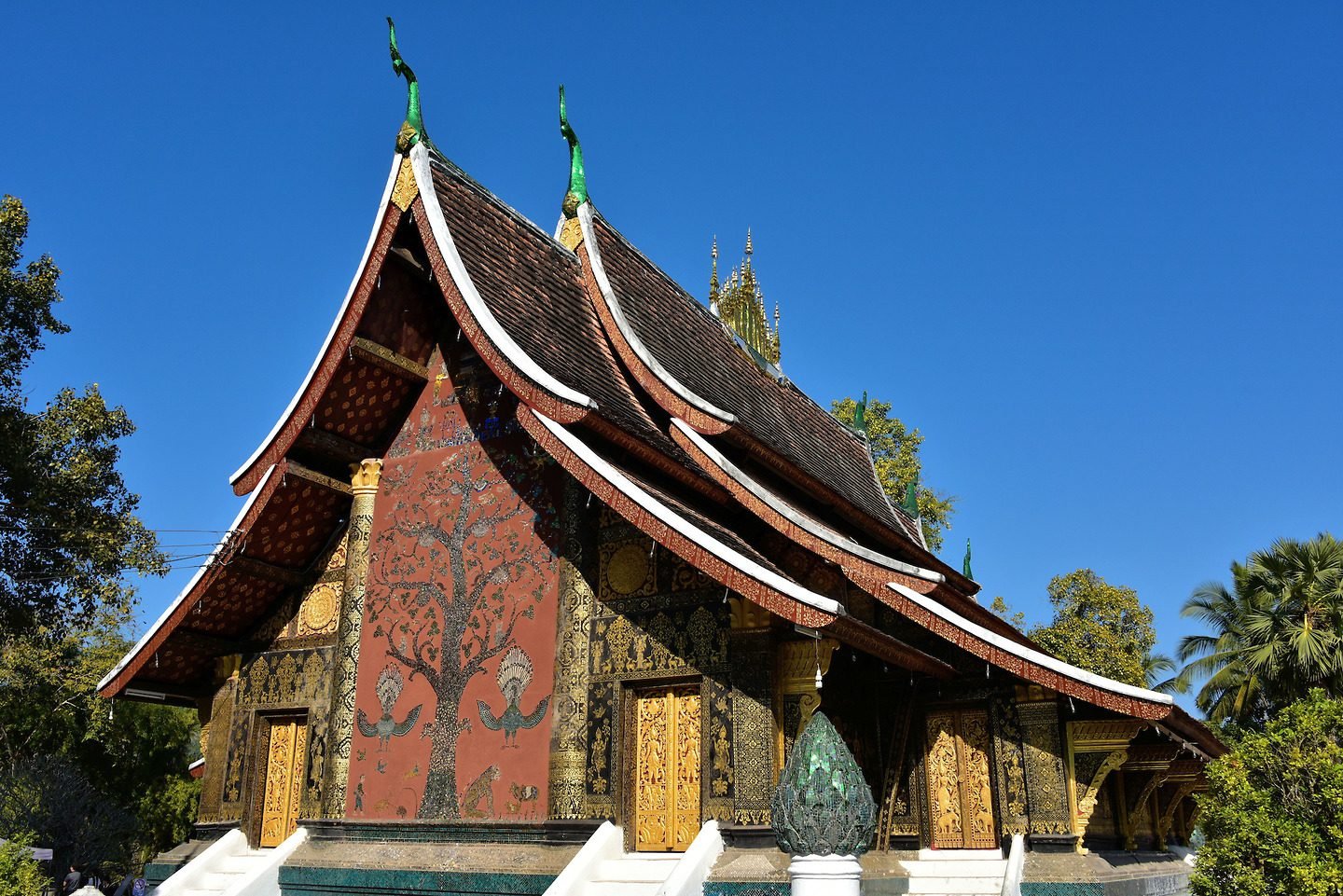
Other Key Structures in the Complex
- Tripitaka Library (built in 1880) – Houses ancient Buddhist scriptures
- Drum Tower (1961) – Used to summon monks for prayers and ceremonies
- Preaching Hall (Sala) – Built around 1560, used for sermons and community teachings
Festivals & Ceremonies at Vat Xieng Thong
- Bunpimay (Lao New Year – April)
- Water rituals to cleanse Buddha images
- Traditional Lao dance and offerings
- Baci Ceremony
- A ritual of spiritual blessing, involving white or red strings tied around the wrist
- Common during important life events or to wish travelers good luck
- Vesak (Buddha’s Birthday – May)
- Candlelight processions, chanting, and floral offerings
- That Luang Festival (November)
- While centered in Vientiane, local observances occur at Vat Xieng Thong with rituals and communal gatherings
- Artisan Exhibitions
- During major festivals, the temple hosts exhibits of traditional crafts, such as:
- Thangka painting
- Silk weaving
- Wood carving
📍 Nearby Attractions in Luang Prabang
While visiting Vat Xieng Thong, don’t miss these nearby experiences:
🏞 Mount Phousi
A short climb offers panoramic views of the old town and rivers—best at sunset.
🕉 Pak Ou Caves
Accessible by boat, these sacred caves house over 4,000 Buddha statues and are one of Laos’s most revered pilgrimage sites.
💧 Kuang Si Waterfalls
Located 29 km from the city, these turquoise cascades are ideal for swimming, relaxing, and exploring the surrounding forest.
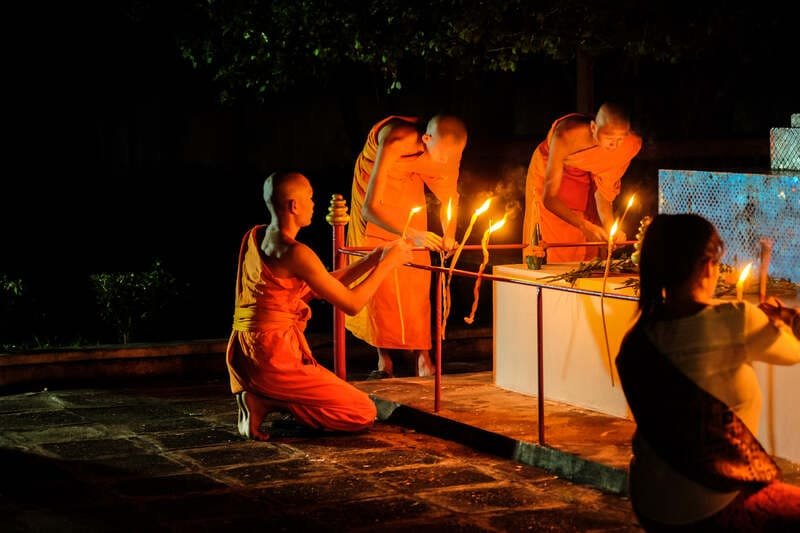
Final Words
Vat Xieng Thong is more than a historic site—it’s a living symbol of Laos’s spiritual and cultural heritage. With its exquisite architecture, sacred traditions, and peaceful setting, it offers a truly meaningful experience in Luang Prabang. Whether you’re a culture lover or a curious traveler, this temple is a must-see on any Laos itinerary.



